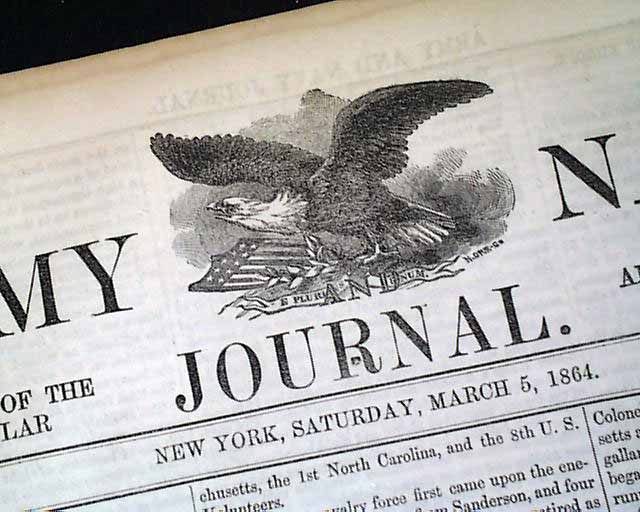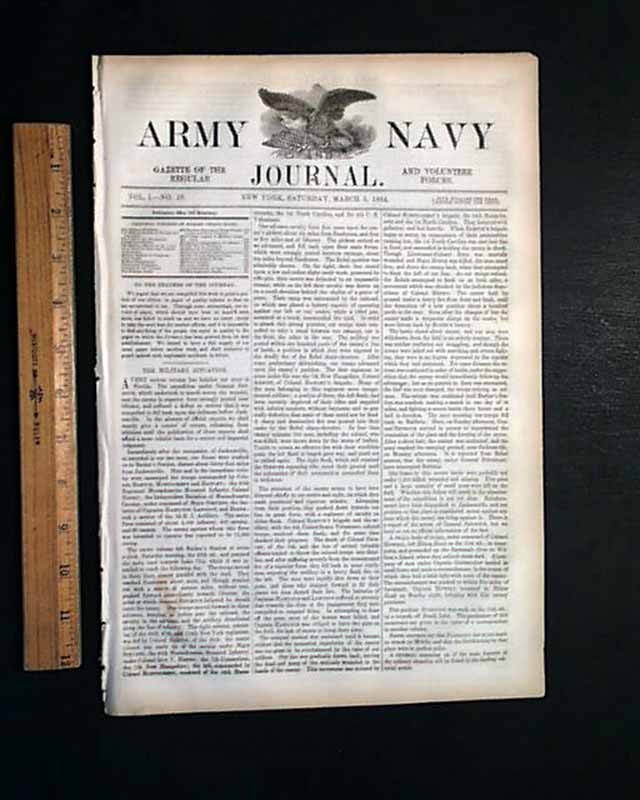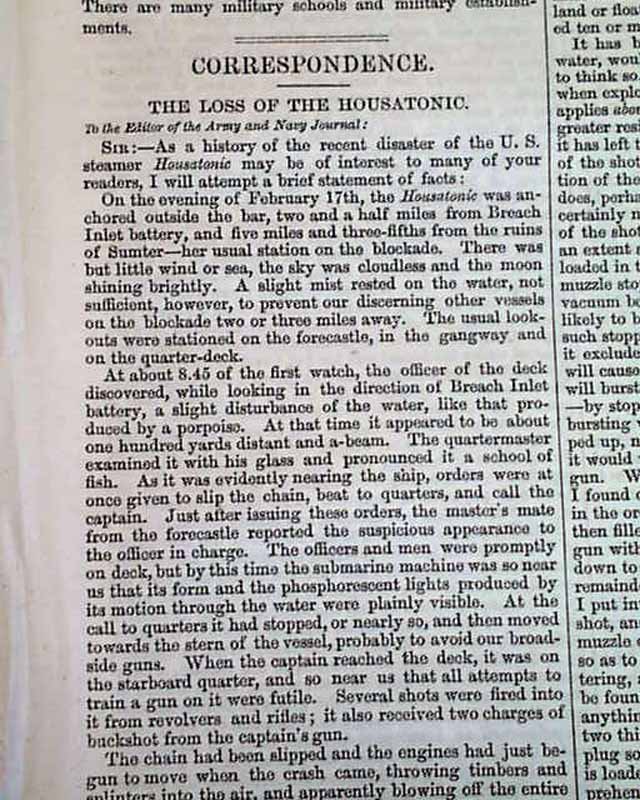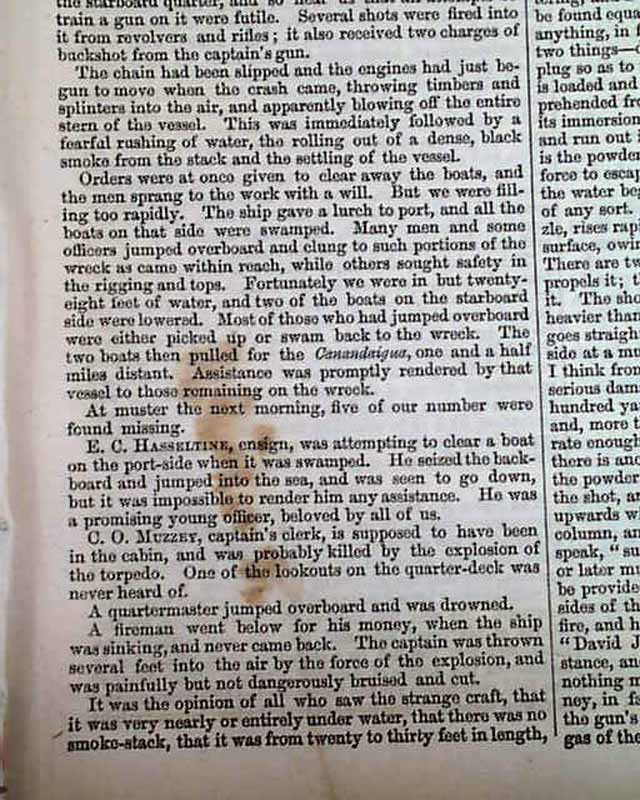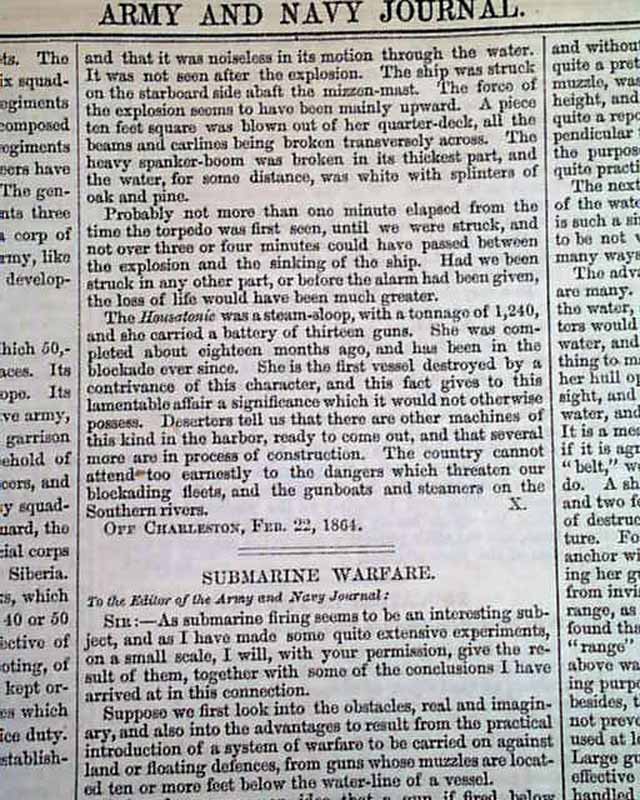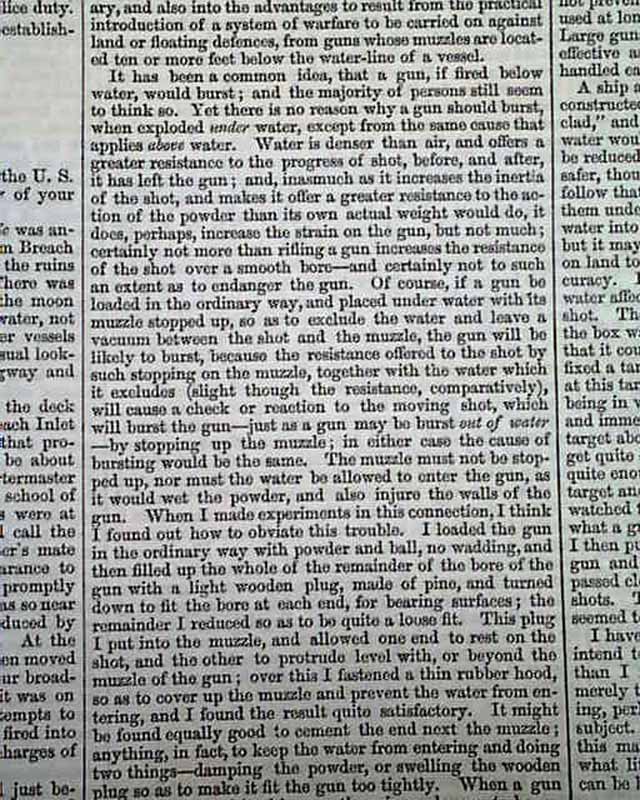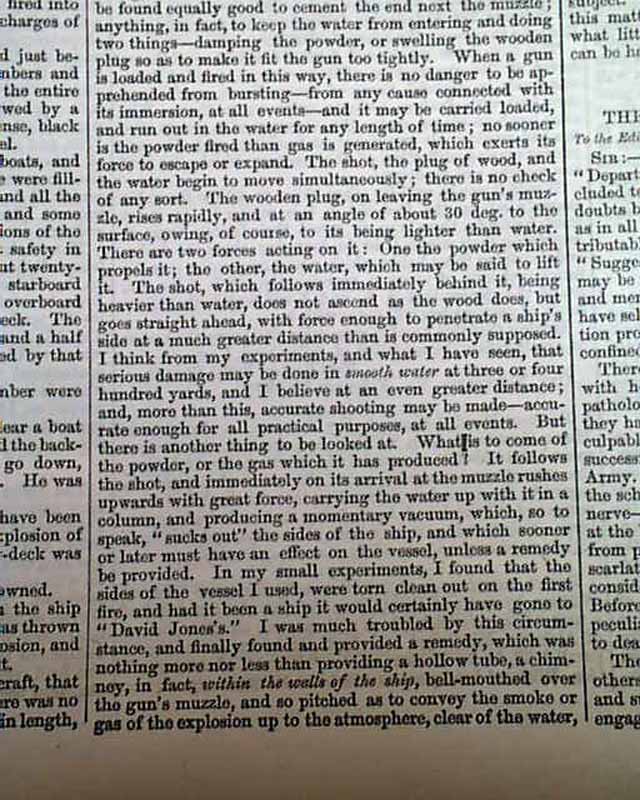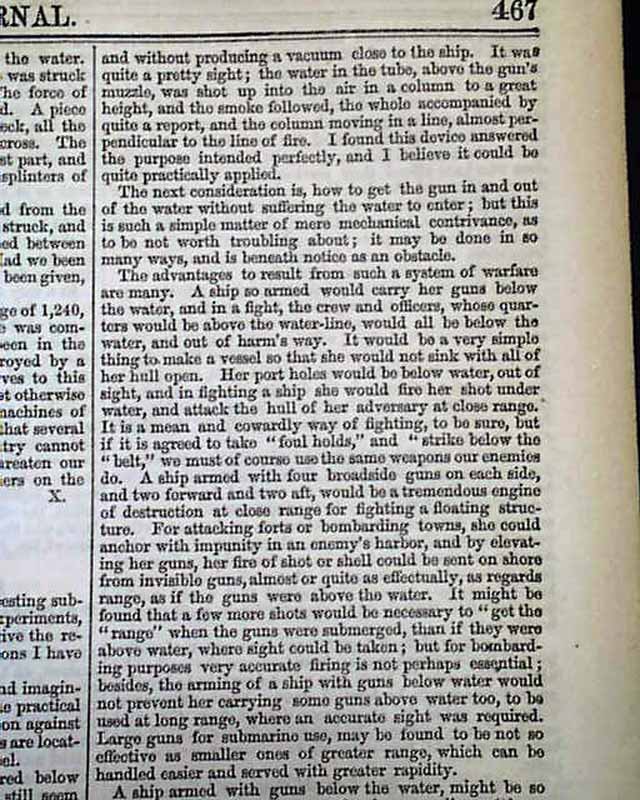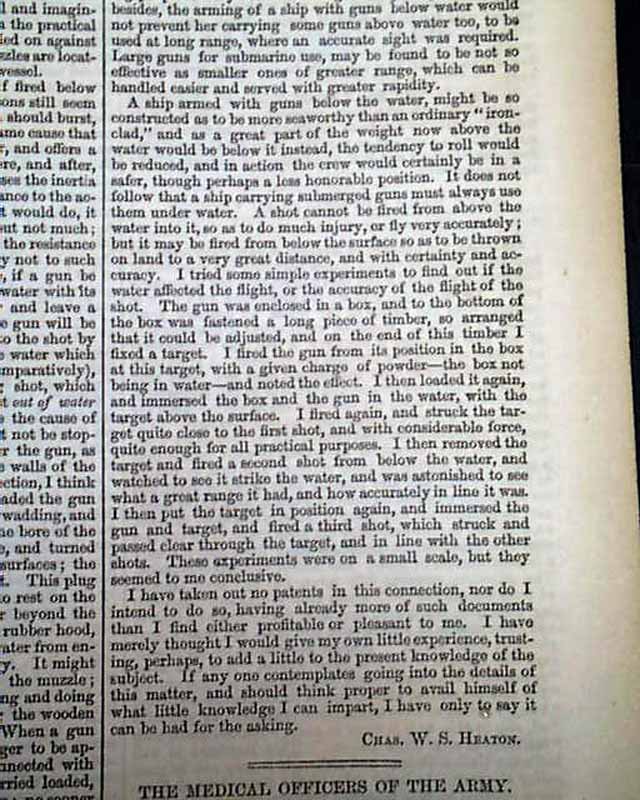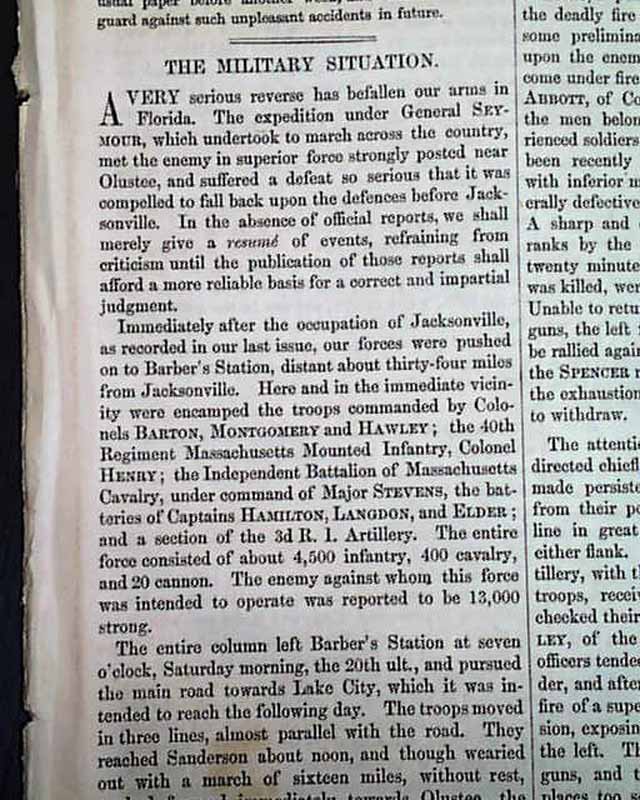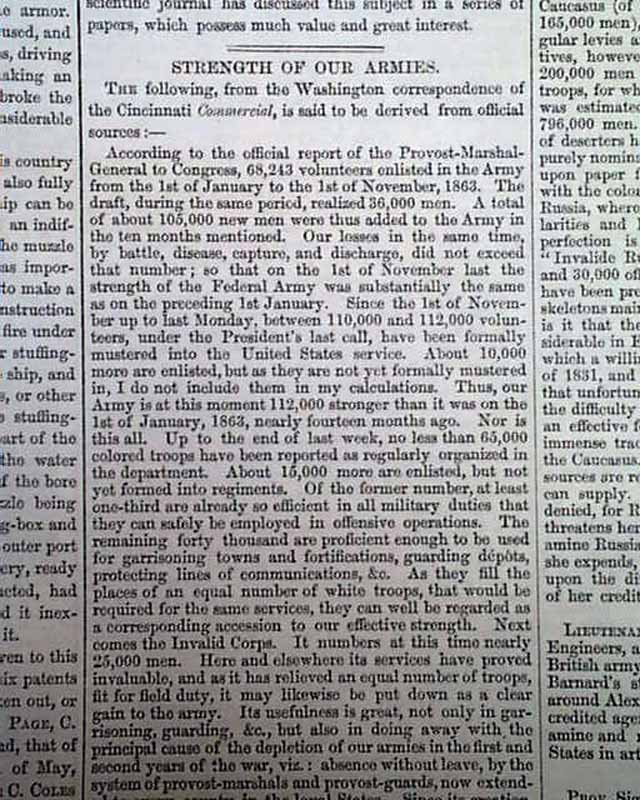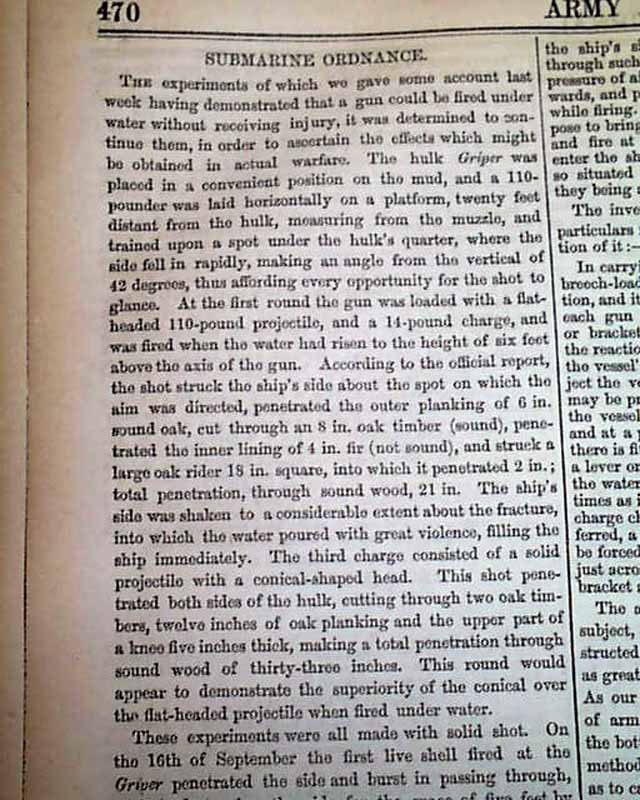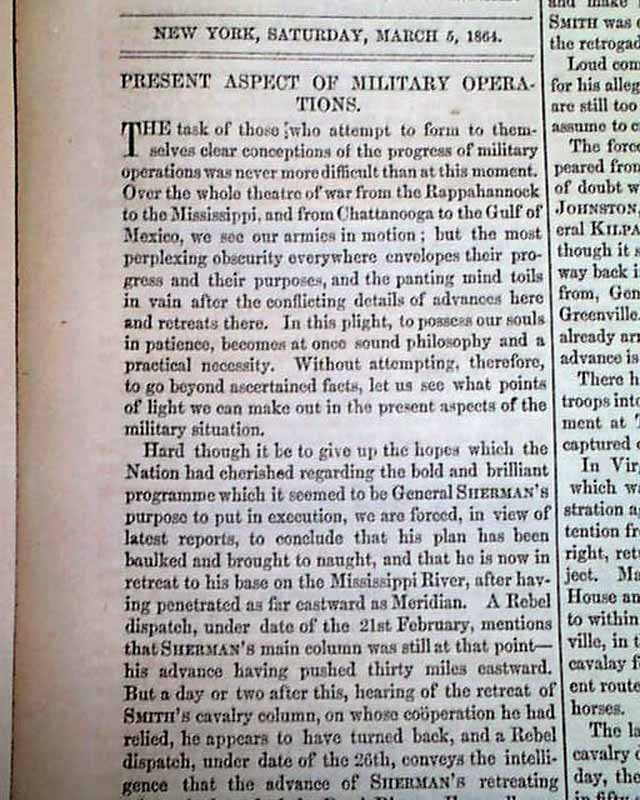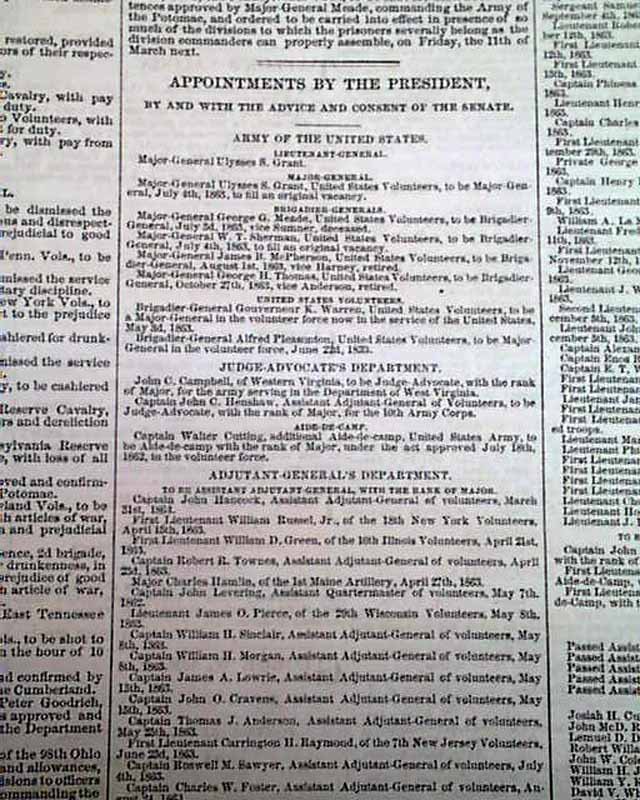Home >
HMS Hunley...
HMS Hunley...
Item # 578600
Currently Unavailable. Contact us if you would like to be placed on a want list or to be notified if a similar item is available.
March 05, 1864
ARMY & NAVY JOURNAL, New York, March 5, 1864
* Ulysses S. Grant promoted to Lieutenant General
* Confederate submarine Hunley sinks the Yankee Housatonic
* Great title to have this report in
As noted in the masthead this was the: "Gazette of The Regular & Volunteer Forces" and as such is replete with military news of all sorts.
Perhaps the best piece in this issue is that present on page 3, which takes almost the entire page with two related articles: "The Loss Of The Housatonic" which takes nearly a column and provides great detail on the attack & subsequent loss of the ship (see photos for full text), followed by: "Submarine Warfare" which is a great article on this very new & novel development in warfare. The Yankee ship "Housatonic" was sunk by what was considered the very first submarine to sink an enemy warship, now known as the Hunley. Given the earliness of this report it was not known at the time its name so it does not appear in this article. The Hunley has been in the news in recent years as it was discovered in Charleston harbor and recently raised. Great to have these reports in a military newspaper.
Other Civil war reporting includes: "The Military Situation" which reports on the Civil War from various fronts. Inside includes: "The Loss of the Housatonic" "Submarine Warfare" "Strength of Our Armies" "Present Aspect of Military Operations" "Hasty Condemnation of Officers" and more. Complete in 16 pages, nice condition.
wikipedia notes: Hunley made her first and only attack against a live target on the night of February 17, 1864. The vessel was the USS Housatonic. Housatonic, a 1240-ton (1.1 million-kilogram) steam-powered sloop-of-war with 12 large cannons, was stationed at the entrance to Charleston, South Carolina harbor, about 5 miles (8 kilometers) out to sea. In an effort to break the naval blockade of the city, Lieutenant George E. Dixon and a crew of seven volunteers attacked Housatonic, successfully embedding the barbed spar torpedo into her hull. The torpedo was detonated as the submarine backed away, sending Housatonic and five of her crew to the bottom in five minutes, although many survived by boarding two lifeboats or by climbing the rigging until rescued.
After the attack, Hunley failed to return. There is evidence that Hunley survived as long as an hour after the attack, which took place at approximately 8:45 p.m. The commander of Battery Marshall reported the day after the attack that he had received "the signals" from the submarine indicating she was returning to her base. The prearranged signal, from a blue carbide gas signal lantern, was received at around 9:00 p.m. at Fort Moultrie on Sullivan's Island. The signal was also seen by crew members of Housatonic who were in the ship's rigging awaiting rescue. This type of lantern cannot be seen at distances beyond about one and a half miles, indicating that the submarine had come fairly close to shore after the attack on Housatonic.
After signalling, Dixon would have taken the sub underwater to try to make it back to Sullivan's Island. What happened next is unclear. The finder of the Hunley suggested that the submarine was unknowingly rammed by the USS Canandaigua, which was coming to the recue of the Housatonic's crew.
One possibility is that the torpedo was not detonated on command, but rather malfunctioned due to damage incurred during the attack. It was intended that the torpedo be detonated when Hunley had retreated, playing out its detonation rope, to approximately 150 feet (46 m) from the target, to minimize damage to the sub. However, witnesses aboard Housatonic uniformly stated that the submarine was no more than about 100 feet (31 m) away when the torpedo detonated. This is because the crew of the Hunley were fighting the waves, so they stopped one hundred feet away from the Housatonic to wait until the current could carry them away. The crew of the Housatonic fired on the Hunley, and one man hit the detonation box with his pistol. This caused the explosion that sank the Housatonic and damaged the Hunley.
In October 2008, scientists reported that they had found that Hunley's crew had not set the pump to remove water from the crew compartment, which might indicate that it was not being flooded. "It now really starts to point to a lack of oxygen making [the crew] unconscious," the chairman of the South Carolina Hunley Commission said. "They may have been cranking and moving and it was a miscalculation as to how much oxygen they had."
Her crew perished, but H.L. Hunley had earned a place in the history of undersea warfare as the first submarine to sink a ship in wartime.
Category: Yankee


